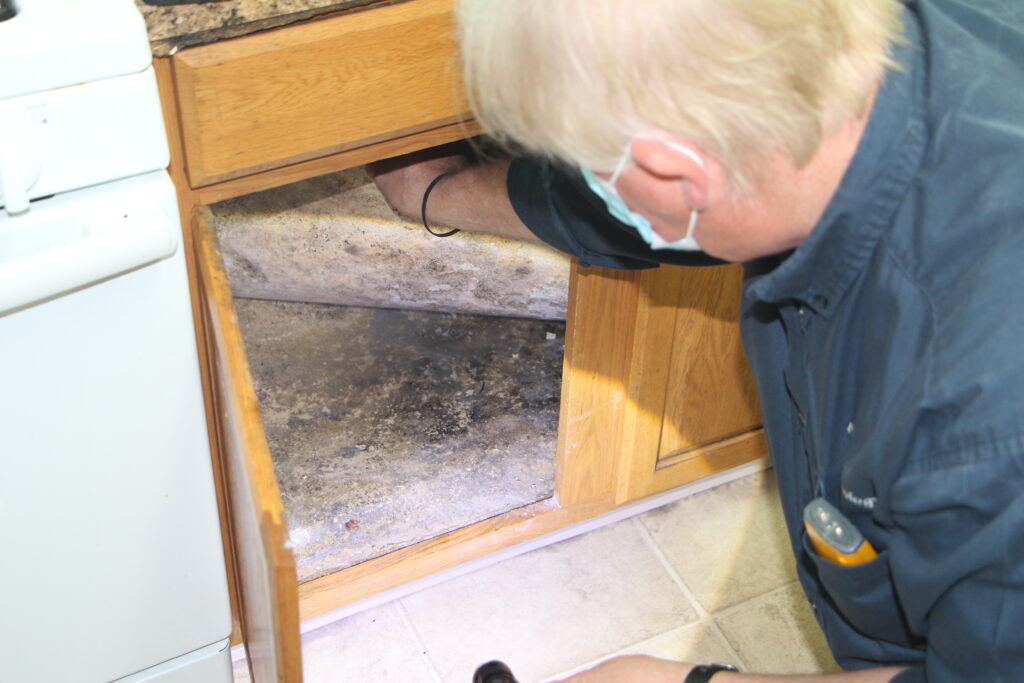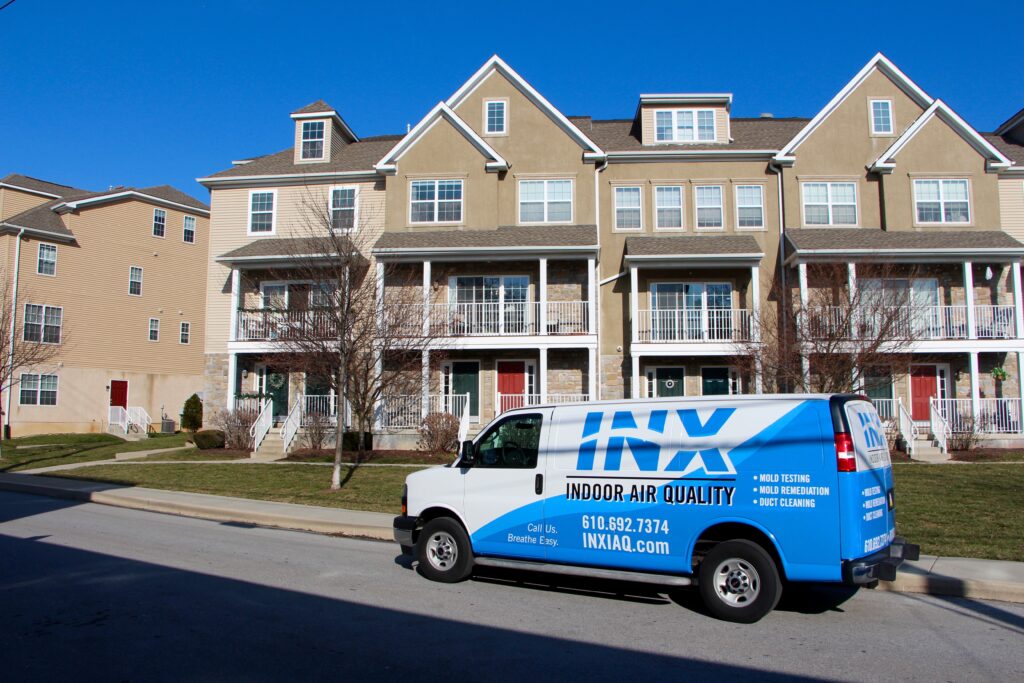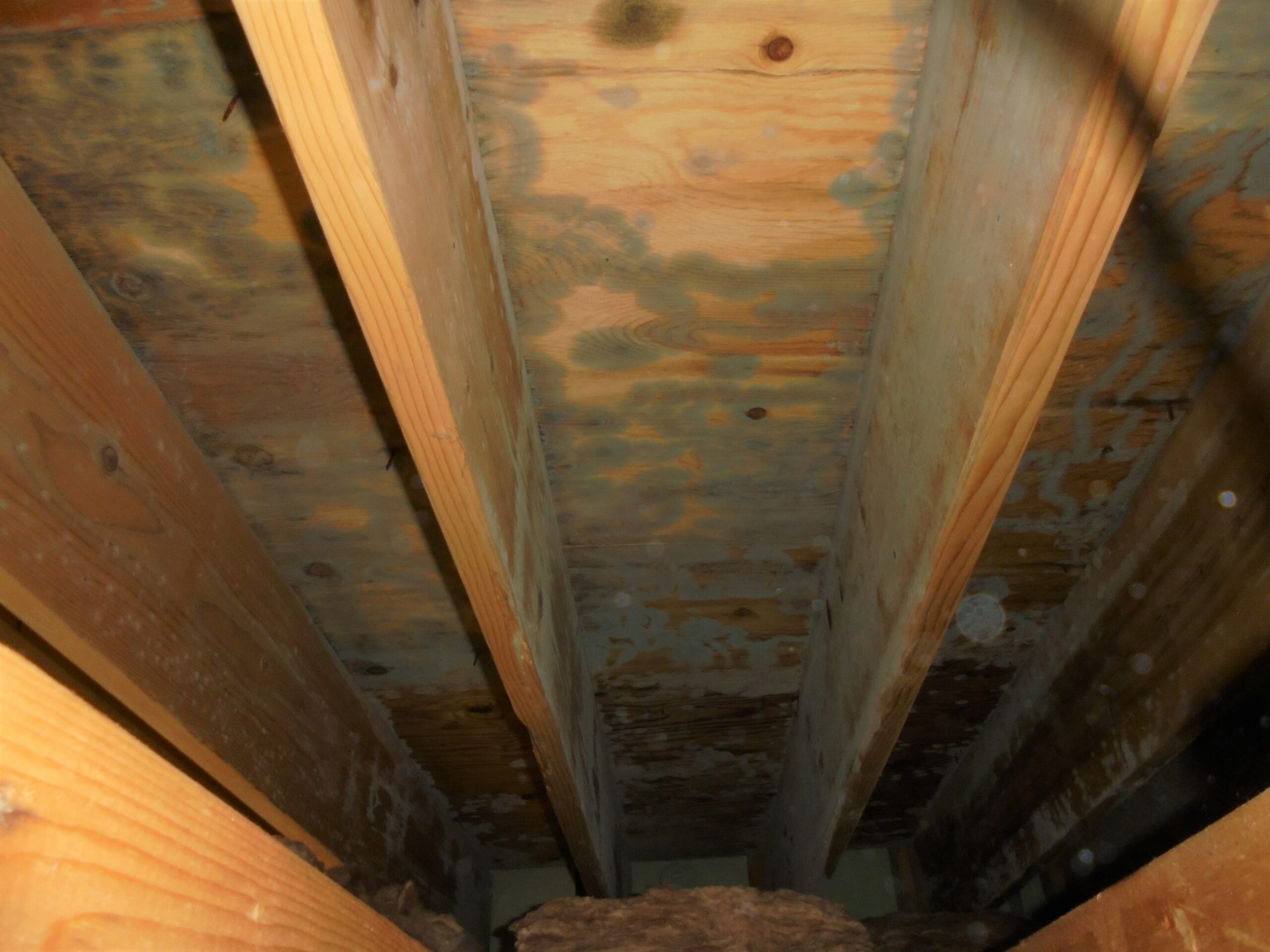Buying a home is a huge investment, so new home buyers need to do everything they can to ensure it’s a good one. A big part of this is conducting a comprehensive home buyer mold inspection to ensure that the home is mold-free when you move in.
Still, unless you’re a mold inspection expert yourself, you’ll probably need a bit of guidance to get the job done. So, here is our comprehensive home mold checklist for buyers and realtors in Chester County.
Home Buyer Mold Inspection Checklist for Home Exterior
Most people think that mold inspections take place entirely in the interior of the home. However, there are actually a number of things to look out for around the exterior of the home before you ever go inside.
Roof Leaks
The roof is a part of the home that is particulary prone to water intrusion, making it a hot spot for mold growth. Because of this, every home mold inspection should start by checking the roof for any broken or missing shingles and other signs that water could be seeping through.
Visible Cracks and Patches in the Foundation
Other than the roof, a home’s foundation is another common area where water can enter a home and facilitate mold growth. This means that it’s also essential for potential home buyers to look out for any visible cracking or recent patches that could potentially allow water to enter and cause problems.
Improper Grading
When rainwater lands on the ground, gravity kicks in and causes it to flow downhill and collect at the lowest point of elevation. However, if that low point it the foundation of your new home, you could be in for some water damage and mold problems in the future, making it essential to check for proper grading during your inspection.
If everything is properly graded, the landscape around the home will allow water to flow away from the home and not toward it.
Exterior Water Damage
Every home buyer’s mold inspection should also check for any visible signs of water damage around the home. Potential signs of water can include things like warped and discolored siding, peeling and bubbling paint, cracked bricks and mortar, and even clogged or otherwise damaged gutters and downspouts.
Large Trees
Large trees are often overlooked when it comes to mold inspections. However, you may be surprised just how much havoc they can potentially cause if you don’t inspect them properly.
Large trees have massive root systems that can span an entire yard. If one of those roots damages a pipe or a part of the foundation, you won’t only have to deal with water intrusion and mold. You may also need to shell out tens of thousands of dollars to make the proper repairs.

Home Buyer Mold Inspection Checklist for Home Interior
There are many different things to look out for during the interior part of your mold inspection. However, while some areas of the home are more prone to mold growth than others if you notice a musty, rotten smell anywhere in the new home, it is likely a sign of mold growth.
Still, if you don’t smell anything, that doesn’t necessarily mean that there aren’t any potential problems. So, here are all the interior areas that you should check during your mold inspection.
Water Marks on Ceilings and Walls
Mold loves moisture, so it’s important to be on the lookout for any signs that water is intruding where it shouldn’t be. This may include checking for watermarks and discoloration on ceilings and walls, and damp spots on and under carpeting.
Window Frames
Window frames are another potential problem area for water intrusion and mold growth, making checking all the windows in a home particularly important. You should pay close attention to the corners of windows and the bottoms where they close to ensure they are sealed properly and there are no wet spots.
Kitchen Cabinets
Kitchen cabinets are dark and poorly ventilated, so if water is present, mold will undoubtedly begin to grow. Because of this, every potential home buyer should thoroughly check all the cabinetry in the kitchen to ensure that it is completely dry.
Bathrooms
Poor ventilation along with the excess moisture often present in bathrooms make them one of the most common rooms where mold is likley to grow. So, you should always meticulously inspect all the cabinets, plumbing, windows, exhaust fans, tiles, grout, and caulking to make sure there are no cracks or leaks that could cause problems.
Attics
If a home’s roof is leaky, all the water that leaks through will end up in the attic, where the combination of moisture and poor ventilation are likely to provide the perfect environment for mold to grow. Even if you don’t notice any damage to the roof on the outside, you should still thoroughly inspect the attic if you really want to be sure that water isn’t getting through.
Basements
Just like with the roof and attic, if there are any leaks in the home’s foundation, the water is likely to come into your basement. While finished basements are likely a bit safer when it comes to leaks and potential mold problems, checking for signs of water intrusion, damage, and mold growth is essential, whether it’s finished or not.
Ductwork
A home’s ductwork is another hotspot where mold can thrive, especially if the previous owner didn’t keep up with proper HVAC maintenance and regular duct cleaning. Even if the rest of the home is mold-free, a few stray spores in the ductwork could quickly spread around your home as soon as you turn the AC or heating on. So, once your done with everything else, don’t forget to check the home’s ductwork before you buy as well.

Contact INX Indoor Air Quality Today
Are you planning on buying a home in the Chester County area? Do you need a company you can trust to conduct a thorough mold inspection before you make your final decision? Give INX Indoor Air Quality a call!
Their team of certified mold inspectors has conducted countless mold inspections for homeowners all over southeastern PA and will happily do the same for you. So, don’t risk having any moldy surprises when you move in. Call INX Indoor Air Quality and schedule your professional mold inspection today!



